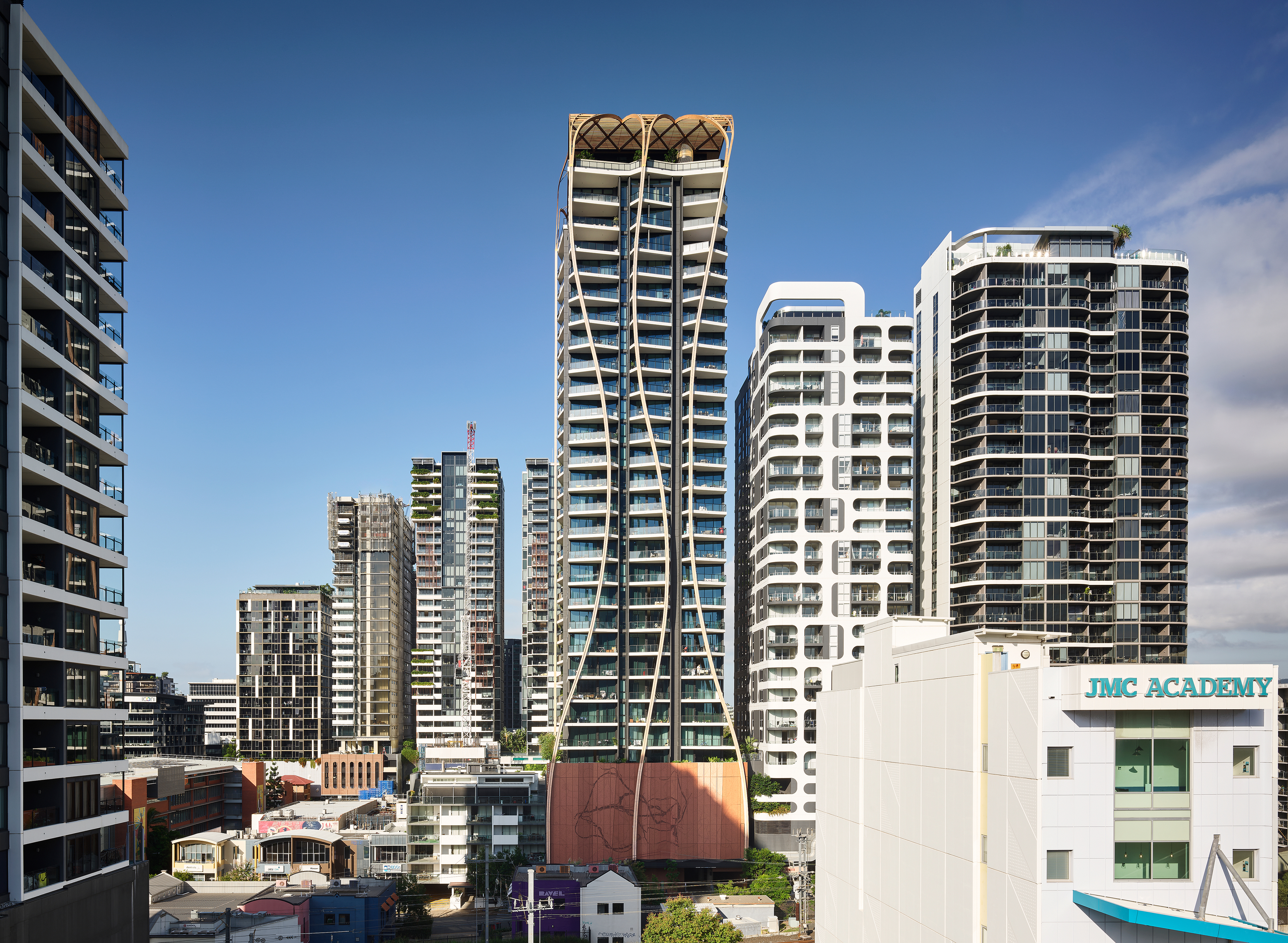ARCHITIZER.COM
Closing the Loop: 8 Sustainable Residential Buildings with Circular Water Systems
Architects: Want to have your project featured? Showcase your work by uploading projects to Architizer and sign up for our inspirational newsletters.
As global concerns about water scarcity and climate resilience intensify, the need for sustainable living practices has become more urgent than ever. Today, from residential buildings to museums, circular water systems are emerging as an important innovation, offering a blueprint for more responsible resource management. These systems prioritize reuse, recycling and conservation of water, transforming how buildings interact with their surroundings. Instead of depending only on external water supplies, circular strategies harness rainwater, treat greywater and integrate natural filtration methods to create closed-loop systems that drastically reduce consumption and waste.
Beyond environmental benefits, circular water practices also enhance community resilience, providing greater independence in the face of growing climate instability. Architects and designers worldwide are increasingly incorporating these solutions into residential projects. From rainwater harvesting and advanced filtration to water-sensitive landscaping and integrated green infrastructure, today’s sustainable homes are setting new standards for how we live with water.
Upper House
By KOICHI TAKADA ARCHITECTS, South Brisbane, Australia
Popular Choice Winner, Residential, Multi-Housing Unit, 12th Annual A+Awards
Designed by Koichi Takada and his team, the Upper House in South Brisbane, Australia, features a multi-residential design including 188 apartments spread across 33 stories. Its striking architecture draws influence from the indigenous Moreton Bay Fig tree, signaling a transformative shift in multi-residential design. This development blends a connection to nature with high-quality design, resident wellbeing and environmental sustainability.
Energy-efficient systems, alongside using recycled and renewable materials, minimize ecological impacts while enhancing positive environmental effects. Furthermore, the building has been designed to cut water usage by 20%, and Upper House pledges to use 100% renewable energy for its electricity needs. The facility includes 194 bicycle spaces for residents and 48 for visitors and electric vehicle charging ports for 60 parking spots.
Dove
By AGATHOM, Toronto, Canada
Popular Choice Winner, Private House (M 2000 – 4000 sq ft), 12th Annual A+Awards
Dove contains a series of interconnected pavilions, each space is independently linked by various paths. Constructed using a combination of wood and concrete, the building is designed for optimal performance: it utilizes ground-source heating and cooling, produces electrical power through a large solar photovoltaic array, and sources water from an on-site well. The thermal design of the building envelope has been meticulously crafted to exceed the standards established by the building code.
Loma Sagrada House
By Salagnac Arquitectos, Nosara, Costa Rica
Jury Winner, Private House, 12th Annual A+Awards
Loma Sagrada House evolved from environmentally damaged land into a regenerative project. Unlike typical harmful constructions, it improved the land and preserved soil integrity with minimal earth movement, promoting quick natural regeneration. The project features eco-friendly structures, with the main building on the southern hillside, protected from strong winds. This eco-friendly approach enhances human health by minimizing electromagnetic radiation and ensuring comfort. Innovations include natural ventilation, solar protection, advanced shielding wiring, flicker-free lighting, water reuse, solar energy systems, safe water purification and a chemical-free pool.
Four Houses Pilares
By grupoarquitectura, Valle de Bravo, Mexico
Four Houses Pilares is a four-house complex featuring its own common amenities. The structure blends with its surroundings, and the houses are metallic, with floors made of beams and wooden panels that were left apparent. The interior floors and terraces are made of a grey stone from India called Caledonia. Additionally, wastewater is recycled and treated, lighting is automated for efficiency, and the windows feature state-of-the-art glass to conserve temperature and insulate against noise.
FRAGMENT Karlin
By Trigema, Prague, Czechia
Fragment collaborates with Trigema development, Qarta architecture studio, and artist David Černý. According to its designers, this construction results from a harmonious blend of architecture, art and residential development. The building offers 140 fully furnished studio apartments. Additionally, Fragment is a contemporary energy-efficient structure utilizing advanced technologies. Its apartments feature geothermal heat pumps for heating and cooling and incorporate green roofs and rainwater retention systems. All apartments feature the Smart Home Loxone system, through which you can control your home through a single panel and app.
Lambkill Ridge
By Peter Braithwaite Studio, Terence Bay, Canada
Designed as a getaway for a family of four, the architecture features two nearly identical volumes mirrored along a long, narrow boardwalk that connects the access road to the winding nature trails beyond. Elevated above the forest floor, the design aims to immerse the user in nature, offering stunning views of the barren lands and ocean from its loft spaces while promoting ecological vitality. The long ascent via the two-tiered stairwell and boardwalk reveals a subtly framed trailhead between the two darkened volumes. Created with a focus on being mostly off-grid, notable characteristics consist of a window engineered to optimize both thermal heat gain and passive ventilation for temperature regulation throughout the entire year, a toilet that burns waste, and a system for collecting and filtering rainwater.
Royal II
By William Kaven Architecture, Portland, Oregon
Royal II is a residential project in Portland, designed with a simple material palette of dark steel, concrete, glass and custom bronze-black cladding that grounds the house within the surrounding treescape. At the same time, an encircling green roof further blurs the distinction between architecture and forest. Royal II’s main level features a large, cantilevered living room with oak floors, kitchen and dining areas with built-in custom cabinetry and the primary bedroom suite, which opens onto a private sun deck.
The home’s daylight basement, partially embedded in the steep slope, is flooded with light from the skylight and east-facing windows. Off the den, a large ground-level terrace abuts a filtration planter that forms part of the concrete retaining wall and contributes to the home’s water reuse system.
White Rock
By Omar Gandhi Architects, Wolfville, Canada
The private residential project, designed in 2023, near Gaspereau River Valley stands on Mi’Kmaq territory, rich in significance for the Acadian community that named the river after the gaspereau fish. White Rock serves as an escape. Approaching the cabin, its silhouette appears both imposing and delicately placed atop a rocky ridge with a simple design. The landscape design is raw, preserving a light footprint within the woodland setting. Rainwater is collected and stored for irrigation, while the existing trees offer shade from the intense sun during the brief, warm summer months.
Architects: Want to have your project featured? Showcase your work by uploading projects to Architizer and sign up for our inspirational newsletters.
The post Closing the Loop: 8 Sustainable Residential Buildings with Circular Water Systems appeared first on Journal.










